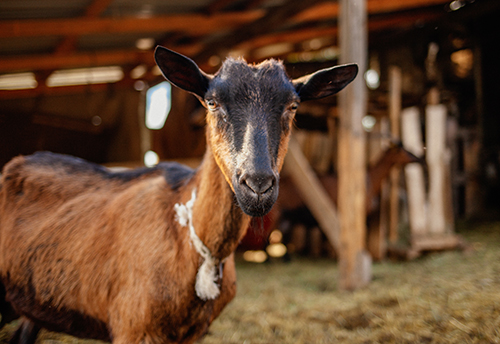Dairy Goats: A Growing Industry
Oct 17, 2022

Written by our friends at Iowa State University College of Veterinary Medicine
“Dairy goat milk production is currently the fastest growing animal production sector in the United States,” says Dr. Pat Gorden of Iowa State University College of Veterinary Medicine. The United States Department of Agriculture (USDA) reports there are currently 440,000 does and kids in the country, with Wisconsin and Iowa being first and third in total numbers respectively. California is the nation’s second largest home to dairy goats. With growing herds, the concern for disease and illness perpetuates as well. It is very important to stay up to date on vaccinations, nutritional needs, and udder health. One infection that will cause a lot of stress to you milking does is more prevalent than most might be aware. Mastitis, commonly found in dairy livestock, can be a deadly infection of the mammary gland within the udder that can slow milk production and make the doe very sick. This can be caused by an injury, stress, or bacteria or virus infecting the mammary gland.
Signs to notice:
Your local Co-op is a great resource for all things small ruminant. Find more content like this in this month’s issue of The Cooperator.
“Dairy goat milk production is currently the fastest growing animal production sector in the United States,” says Dr. Pat Gorden of Iowa State University College of Veterinary Medicine. The United States Department of Agriculture (USDA) reports there are currently 440,000 does and kids in the country, with Wisconsin and Iowa being first and third in total numbers respectively. California is the nation’s second largest home to dairy goats. With growing herds, the concern for disease and illness perpetuates as well. It is very important to stay up to date on vaccinations, nutritional needs, and udder health. One infection that will cause a lot of stress to you milking does is more prevalent than most might be aware. Mastitis, commonly found in dairy livestock, can be a deadly infection of the mammary gland within the udder that can slow milk production and make the doe very sick. This can be caused by an injury, stress, or bacteria or virus infecting the mammary gland.
Signs to notice:
- Udder becomes swollen and warm, and may be tender to the touch
- Clots or flakes in the milk, as well as discoloration and decreased production
- Does may stop eating, become depressed in nature, and experience a fever; some may hold a rear leg up or appear “lame”
- Milk out the infected side of the udder (if this is difficult, it is possible to administer two IU of oxytocin to assist in the removal of the milk)
- Infuse the udder with a commercially prepared intramammary infusion product
- Penicillin may be administered if the infection has spread further than the udder
- Keeping a clean milking parlor with added health precautions for your herd can help eliminate these concerns
- Dehorn goats and keep feet trimmed to prevent injury to the udder
- Keep the hair on udders clipped to avoid an accumulation of dirt and excess moisture
- Use a wash on the goat teats and udder before milking and a teat dip or spray afterward
- Wean babies gradually or continue milking once kids are no longer nursing
Your local Co-op is a great resource for all things small ruminant. Find more content like this in this month’s issue of The Cooperator.